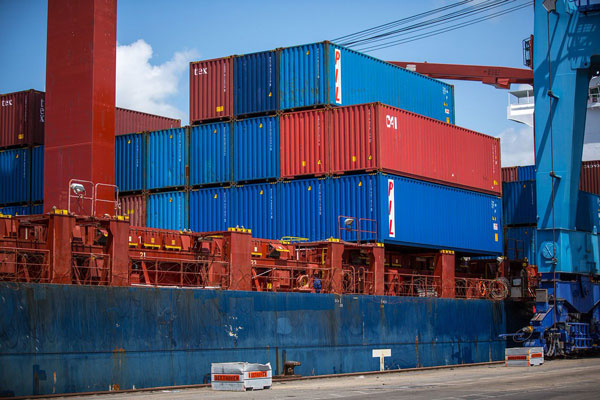
Magezi notes that while the decision could boost the cotton, apparel, textile and leather sectors and ultimately enhance employment a rising from industrialization, the governments could also experience significant losses in tax revenue.
For example, Kenya collected $54 million in tariff revenue on 100,000 tons of imported used clothing in 2013. In 2016, Rwanda nearly tripled its import duty on imported clothing from 35 % to 100 % to encourage purchases from the country’s limited textile mills.
Also, the banning used clothes imports could lead to smuggling of the banned clothing into the EAC countries, especially in the short run due to shortage and the limited ability to afford brand new garments.
“Smuggling would not only promote illicit trade and deny the governments’ tax revenue but also put a higher burden on governments to address smuggling. Further, enforcement of the ban could be at a cost to the governments that would have to put in place measures to implement the ban in the different states,” she said.
How other countries are handling the issue of secondhand clothes
In South Africa, importation of used clothes has been banned. Outside the continent, countries such as India have embraced their cultural attire which is manufactured/ designed locally and therefore reduces demand for second hand cloth imports.
However, using this strategy in EAC would be a challenge given the absence of widely accepted cultural attire and the popularity of Western fashion in the Partner States.
On the other hand, developed countries have focused on improving the competitiveness of their local textile industries and the incomes of their citizens to discourage importation of second hand clothes.
“And they have done this, not overnight, but the industry has been built and developed over the years and in some cases, through family generations, where it is now paying off highly,” she says.
Way forward
The Magezi notes that since the proposed ban will affect both well to do middle class and the poor, it should put the same tax measures on the new clothing so that the pricing of new clothing is as high as that of the used clothes.
She also suggests that banning import of used clothes should be done in a phased approach to soften the impact of the ban on the domestic consumers as well as the source countries.
This, she, says would also make implementation of the ban easier, by putting in place relevant standards that support only the importation of high grade clothes.
She also says that EAC need revise the policy on economic processing zones for domestic supply to increase the percentage of products that can be sold into the EAC market specifically for the cotton, apparel, textile and leather sectors.
“(However), the factors that are affecting industrial production in Africa are not mainly used clothes but the unfavorable conditions for industrial growth and development in some of the partner states. If these conditions such as high electricity tariffs, absence of real tax incentives among others are not addressed, the ban will not achieve its intended goal of boosting progress in the region,” she added.
Moses Ogwal, director Policy Advocacy and Trade at the Private Sector Foundation Uganda told The Independent that while used clothes pose a risk to the textile industry, it will only occur when local production has increased.
He suggests the need to have a mix of used clothes that competes favourably with the newer ones on the market as local industries improves production to meet consumer needs.
Global share of used clothes import in 2015
| Countries | % of imports |
| Pakisatn | 10.2 |
| Malasyia | 7.1 |
| Russian Federation | 5.8 |
| India | 5.5 |
| Tunisia | 4.6 |
| Guetemala | 4.3 |
| Netherlands | 3.4 |
| Germany | 3.4 |
| Hungary | 3.3 |
| Uganda | 3.2 |
| Poland | 3.1 |
| Mozambique | 3.1 |
| Chile | 3.1 |
| Tanzania | 3.0 |
| Canada | 3.0 |
| Others | 33.9 |
Source: United Nations Data
 The Independent Uganda: You get the Truth we Pay the Price
The Independent Uganda: You get the Truth we Pay the Price



These US threats are unbelievable and audacious. I’m at a loss for words. Used clothing are not good at all. People get all kinds of diseases such as skin rash and eczema so why would you want Africa to continue depending on your used underwear and clothing? Please rethink your decision and allow all these sovereign states to plan their economies and luves of their people. Otherwise it amounts to bullying. US President has banned the importation of steel and aluminium to the US. What do you say about that.
As an American concerned about environmental degradation and an advocate for sustainable development, I must say that I agree with you, Araba. The U.S. politicians referenced are concerned (and have been trained to do so) with the profits of the clothing industry, which includes multinational retail corporations that unfortunately promote advertising conveying the message that unsustainable consumption brings happiness while painting over the gross human rights violations and environmental issues that many of these MNCs commit. Most consumers are simply unaware of the life cycle of their clothing, its impact on farmers, other countries’ clothing industries, or the greenhouse gas emissions it emits during decomposition. This is slowly starting to change as educational awareness campaigns grow here. However, there has been a strong need for both regulation and a paradigm shift in the West for some time. Perhaps, this ban will force us to look more closely at the intrinsic, systematic issues and bring change. While I do agree with the plan, perhaps a strategic plan on phasing it out as the textile industries develop will help mitigate some of the possible negative side effects. Great article. Very interesting read. Thanks for sharing this knowledge. 🙂